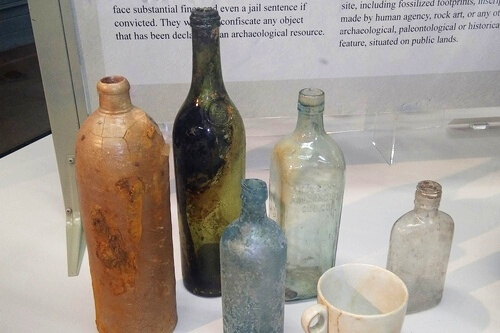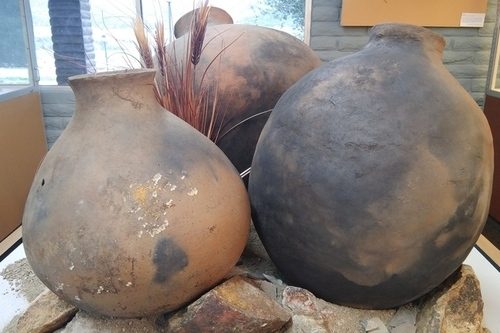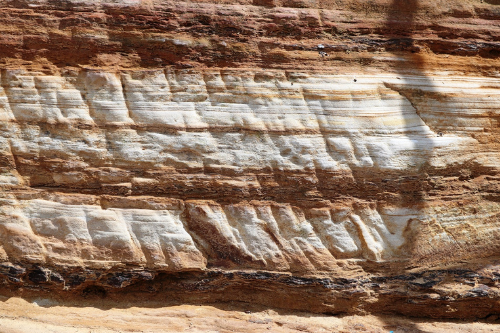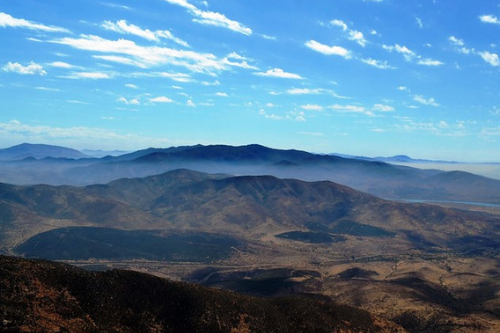
The Wonderful World of Native Animals and Zooarchaeology
The Wonderful World of… is a monthly blog focusing on some of the many themes, concepts, and sub-disciplines related to the fascinating world of Southern Californian archaeology.
Native vs. Non-Native Species
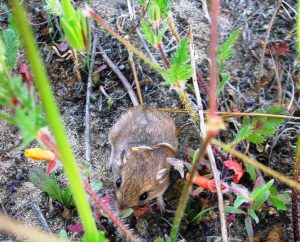
A native species is a plant or animal that occurs naturally in its surrounding habitat. A non-native species is one that was introduced to an area where it does not occur naturally and is able to adapt and thrives living in that environment, without causing harm.
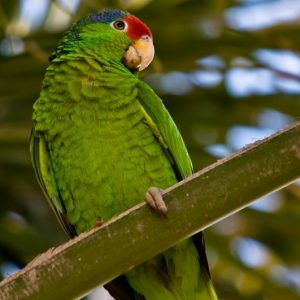
This is a Pacific Pocket Mouse, a native species in San Diego. These are the smallest mice in the world. They live in coastal sage scrub habitats and are endemic to California.
None of the wild parrots that live in San Diego are native to California. They were brought in and then released by humans, or some are thought to have migrated from Mexico. These parrots are able to survive here by nesting and feeding off of non-native plants that are similar to ones in their native homes.
Invasive Species

An invasive species is a non-native plant or animal that causes harm to the native plants and animals in their surrounding habitats. The South American Palm Weevil is an invasive beetle that likely came to San Diego from Tijuana. These weevils damage the crown of a palm tree, typically killing the tree within months. Once an infestation occurs, there is no way to save the tree and it must be removed to stop the spread of Weevils to other trees in the area.
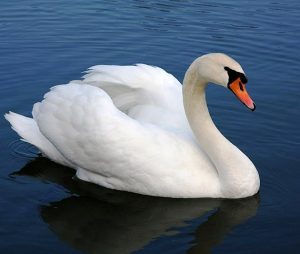
Photo by Yerpa
The Mute Swan is native to Eurasia and was introduced in San Diego at the Del Mar racetrack sometime before 1997. These birds are territorial, can be aggressive, and displace native species as well as deplete their food sources.
What is Zooarchaeology?
Zooarchaeology is the branch of archaeology that studies faunal remains. Faunal remains are the physical remains (like bones and shell) that are left behind when an animal dies. Faunal remains are fragile, and their decomposition over time is likely. However, when they are found at an archaeology site, they can be incredibly useful in determining how past human cultures interacted with the animals that lived during a specific time period. Learning about how societies interacted with animals and their environment allows for a unique look into the past, which contributes to current and future scientific research.
Zooarchaeologists can help identify the change in climate and habitats over time by studying animal remains. Native and invasive species identification helps with this process. By removing invasive species and reintroducing native species, zooarchaeologists can help repopulate areas that have been damaged, endangered, or extinct.
Zooarchaeology in San Diego
Zooarchaeologists use animal remains to explore how past cultural environments used to look, what people ate, and even the movement of animals between different landscapes. The San Diego Zooarchaeology Laboratory at the San Diego Natural History Museum was established in 2010 and houses more than 51,000 bird and 25,250 mammal specimens. These collections represent over 90% of worldwide bird species. More than 290 mammal species are also represented, and these collections continue to grow.
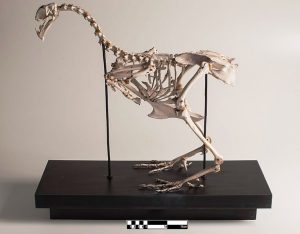
One of these species is the barnyard chicken. Zooarchaeologists Aharon Sasson and Susan Arter study skeletal remains from archaeological sites to learn about historic societies and cultures. Recently, they published a study presenting data about the first use of chickens for food in California during the 18th century. Before this study, not much was known about poultry production in North America. To learn about their findings and this project, watch the SDAC Living Room Lecture The First Chicken Burrito in Western North America: Avian Remains from the San Diego Royal Presidio.
How Can Zooarchaeology Help Native Species?
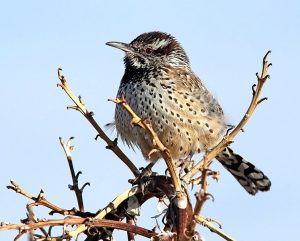
Photo by Alan Schmierer
Scarce and endangered native animal populations benefit from these types of research, as past landscapes may be reintroduced and cultivated to help endangered or threatened native animals thrive.
Cactus Wrens rely on the native Prickly Pear Cactus for nesting. These native birds are important seed spreaders so ensuring their survival is a top priority in San Diego County. Nesting in the local Prickly Pear Cactus is key for their survival so one way to keep this ecosystem thriving is by restoring nest sites after disturbances like wildfires. The San Diego Zoo Institute for Conservation Research is doing incredible work to protect as many native species as they can. You can learn more about their fantastic programs here.
Conclusion

Photo by Chaparralian
This image shows Coastal Sage Scrub, an important habitat in San Diego County which is composed of black sage, white sage, California sagebrush, buckwheat, and other various wildflower species. San Diego is known as a biodiversity hotspot because it is home to many animals that are found nowhere else on Earth. The climate and ecosystems in Southern California allow for many different kinds of species to thrive. This is why it is important to protect our habitats and faunal species however we can.
by Jessica McPheters, Collections Manager


